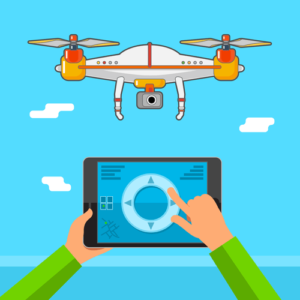No products in the cart.
The customer can review the work completed by the AI Worker, while directing their focus towards other pertinent tasks that keep them busy at the start of the month. These AI Workers unburden the human workers to a large extent and have cut runtimes of each process by 70%. Additionally, Thoughtful identified ways to streamline some of the customer’s processes by eliminating documentation and unnecessary reviews for their employees. In the fast-paced world of modern business, efficiency and productivity are paramount. Organizations across various industries are constantly seeking innovative ways to streamline their administrative tasks and optimize their operations quickly and timely. Our AI-powered solutions tackle HR tasks, such as recruitment, onboarding, and performance management.

IT teams can use RPA platforms to create, monitor, manage, reuse and secure bots and their activities. The robot receives the allocation keys (parameters) in a prepared input file (so-called config file) and systematically performs the allocations in the desired order. Subsequent controls check whether all costs have been allocated correctly or whether all cost centers that should be credited have been credited accordingly.
TeamMate
ML models help group customers into categories based on their behavior, so the most appealing products or services can be recommended to them. For example, banks know which customers might be most interested in opening a new line of credit. Fortunately, the process of hiring and onboarding contain numerous repetitive and rules based tasks that RPA can assist with. For instance, within Accounts Payable, Invoice Processing is one of the most time consuming tasks. Invoices come through various channels, then matched to purchase orders, and often need to be approved by different people for payment. What used to take 3 days via manual processing is now accomplished in 5 hours by the AI Worker.
Despite automating basic accounting tasks, they remain markedly invested in preparing and consolidating data for day-to-day reporting. Appinventiv is one of the fastest-growing global financial software development companies, widely how to start learning natural language known for its exceptional RPA solutions for the finance industry. Backed by a dedicated team of 1000+ tech experts, we provide best-in-class RPA solutions for finance that can automate your Fintech business processes seamlessly.
Account Payable (AP) and Accounts Receivable (AR) Automation
Instead, you will want to continuously analyze the results that you achieve while considering how to improve even further. By “minding the gaps” in your automation with the use of advanced tools such as Kofax RPA, you can nurture a better means of doing business. When data varies too much from what’s expected, or the robot grades its own confidence on the lower end of the scale, it can flag an invoice for manual user review. Outside of these cases, you can dramatically reduce the number of “touches” each invoice requires.
A single mistake by the bank employee or the client can further delay the whole process. Keeping track of business transactions and profit and loss on a daily basis helps you plan ahead of time and warns you of the issues even before they arise. The changes can be implemented to correct and improvise the existing methods and processes of business. Fintech organizations are often heavily involved in cash inflows and outflows. The repeated task of creating purchase orders for different clients and, forwarding them, getting the approval is not just monotonous but is prone to mistakes if done manually.
Harnessing the Power of AI and ML for Automating the Financial Industry
For example, RPA can enable internal audit teams to spend more time collaborating with other departments and sharing results with boards, rather than getting bogged down in repetitive, less strategic tasks. It is not uncommon to find fragmented and heterogeneous system landscapes in companies, resulting from the diversity of (acquired) companies or from the geographical distribution of the company. However, the costs and complexity of these projects prevent them from quickly moving up the priority list. The preparation and uploading of these files (upload files) is usually time-consuming due to required validations.
Minor human errors in each department can accumulate, leading to significant losses. RPA services for the accounting industry let companies automate manual accounting procedures to eliminate human errors from the equation. Today, robotic process automation (RPA) is changing some of these activities by enabling enterprises to automate repetitive and manual tasks.
How Can RPA Be Used in Finance? Examples from the Real World
With the right tools, you can streamline many of the most time-consuming tasks in auditing while improving data visibility and process outcomes. AIMultiple informs hundreds of thousands of businesses (as per similarWeb) including 60% of Fortune 500 every month. Throughout his career, Cem served as a tech consultant, tech buyer and tech entrepreneur. He advised enterprises on their technology decisions at McKinsey & Company and Altman Solon for more than a decade. He led technology strategy and procurement of a telco while reporting to the CEO.

Invoice processing is also repetitive and tedious, especially if the invoices are received or generated in varied formats. As a customer-centric organization, financial organizations struggle to raise correct invoices in client-required formats on time. RPA offers brilliant financial automation solutions that can work straight out of the box and start providing ROI almost immediately. RPA creates a bot to use your existing infrastructure, IT solutions, apps, and other digital systems efficiently and effectively for completing repetitive tasks.
Improved fraud detection with RPA
Robotic process automation (RPA) can help finance leaders tasked with modernizing and streamlining processes automate the jobs that accountants perform every day. By implementing RPA, businesses can free up to 30% of a full-time employee’s overall time and save 25,000 hours of rework for an accounting team of 40, according to Gartner research. Is your team re-keying data from PDF invoices to spreadsheets to accounting software for internal reporting? Such fragmented processes could lead to messy workflow, extra costs, and the risk of misstating financial results.
- A public policy graduate from King’s College London, she has worked as a journalist for an education magazine.
- Once these reports are automated with bots companies can save a lot of time and effort, Sabir said.
- The tools can manipulate data, trigger responses and communicate with other systems in a way that previously required human interaction.
- These bots can automate mundane and repetitive tasks such as data entry, report generation, invoice processing, reconciliation, etc., with great accuracy and speed.
- According to Grand View Research, the global RPA market size was valued at $2,322.9 million in 2022 and is expected to grow at a CAGR of 39.9% from 2023 to 2030.
With our AI-powered automations, you can automate reconciliations, close sub-ledgers quickly, and ensure accuracy with minimal effort. Our financial close solutions help you close your books faster, reducing the risk of errors and freeing your team to focus on more strategic tasks. Robotic process automation (RPA), also known as software robotics, uses automation technologies to mimic back-office tasks of human workers, such as extracting data, filling in forms, moving files, et cetera. It combines APIs and user interface (UI) interactions to integrate and perform repetitive tasks between enterprise and productivity applications. By deploying scripts which emulate human processes, RPA tools complete autonomous execution of various activities and transactions across unrelated software systems.
Need dedicated team?
Intelligent process automation demands more than the simple rule-based systems of RPA. You can think of RPA as “doing” tasks, while AI and ML encompass more of the “thinking” and “learning,” respectively. It trains algorithms using data so that the software can perform tasks in a quicker, more efficient way. In order for RPA tools in the marketplace to remain competitive, they will need to move beyond task automation and expand their offerings to include intelligent automation (IA).
Real-World Examples of RPA in Finance
Such intelligent automation will make your business processes more transparent and ensure financial forecasting accuracy. Another promising application point for RPA in finance and accounting is intercompany reconciliations. Balancing accounts to provide an accurate financial statement is a source of constant stress due to manual data entry, extraction, and cross-checking. In the worst cases, identifying unrecorded transactions or balances and rooting out invoicing mistakes can paralyze the entire department. The audit is vital for the credibility verification of financial records in any organization or institution. Optimized robotic process automation never misses any mistake or step in the accounting process, significantly reducing the risk of various compliance issues you might encounter in the future.
The persons responsible for implementing RPA tools will also need to be trained. They will also need a knowledgeable foundation of accounting skills and functions. Due to its scalability, there is no limit to the number of processes that RPA can manage. Usually, the processes for automation are definable and rule-based, making reporting, accounts payable, clients feedback capture, and so on. — RPA is helping businesses rethink how they accomplish tedious and repetitive – but necessary – tasks.
